- Home
- Henry James
The Wings of the Dove Page 2
The Wings of the Dove Read online
Page 2
1911 In August he returns to England.
1914 James begins work on two novels, The Ivory Tower and The Sense of the Past, which he will not complete before his death.
1915 James’s health deteriorates. He becomes a British subject.
1916 On New Year’s Day he receives the Order of Merit. On February 28 Henry James dies. His ashes are taken to Cambridge, Massachusetts, to be buried in American soil, near his brother William.
1917 Ivory Tower and The Sense of the Past are published in their unfinished state.
Introduction
The Wings of the Dove, published in 1902 in New York and London, ranks as one of the three masterpieces of Henry James’s “major period”1 (along with The Ambassadors [1903] and The Golden Bowl [1904]). Of all of Henry James’s prodigious literary output—he wrote twenty-two novels (two unfinished); 112 shorter tales or stories; autobiographical works; twelve plays; a vast array of travel essays; scores of critical essays, commentaries, and reviews of all kinds; and an astonishing number of letters to family and friends—the three late novels seem to have won the most enduring critical acclaim. They were written, roughly one a year, in a burst of creative energy from 1901 to 1904 as James approached his sixtieth birthday. The original idea for Wings was formed about 1894 when James wrote in his notebooks, at the top of a list of a dozen potential stories: “La Mourante: the girl who is dying, the young man, and the girl he is engaged to.” The popular appeal of the three late novels has never quite matched their critical plaudits. For some, the reason is that the three works are not as accessible as much of James’s other work. The novels are stylistically complex, written in an allusive and poetic prose, and they depart from the “realism” of such earlier works as The Portrait of a Lady (1881), The American (1877), The Bostonians (1886), and Washington Square (1881), and from the allegorical structure of Roderick Hudson (1875-1876).
While the reader cruises along smoothly in the realistic works, easily engrossed in the narrative as the action unfolds in a leisurely fashion, to be caught up in the “action” of the late novels is a different experience. Much more effort and close attention is demanded of the reader. The main action, indeed, is often in the minds of the characters, in their nuances of consciousness, and in the interplay of their moral sentiments. The individuals furthermore act within a framework of complex social forces and circumstances. The moral sensibilities of the characters precipitate agonizing choices for them, and yet the social context constrains the choices. The modern reader, on tackling Wings or one of the other major novels, may be inclined to echo the exasperated sentiments that William James once addressed to his brother apropos the late prose style:
You can’t skip a word if you are to get the effect, and 19 out of 20 worthy readers grow intolerant. ‘Say it out, for God’s sake,’ they cry, ‘and have done with it.’... For gleams and innuendos and felicitous verbal insinuations you are unapproachable, but the core of literature is solid. Give it to us once again.2
Some friends have expressed to me the fear that the language of the late James works is so far removed from modern usage that the novels may come to be regarded as in a category with, say, a Shake-spearean comedy whose allusions are hopelessly beyond the ken of today’s readers. I believe that this view is mistaken. In rereading Wings in preparing this essay I was struck once again by the novel’s richness and vitality, the humanness of the characters, and the moral relevance of their struggles. The rewards are great for the reader who perseveres. Once you are caught up in the story, you will be swept along and you will very likely join the ranks of the James enthusiasts.
William James, in the same letter in which he complained to his brother about the dense prose in the late novels, referred to Henry’s 1907 travel book, The American Scene, as “in its peculiar way ... supremely great.” To struggle with the moral dilemmas of the characters in the late James novels is to be transformed along with them, to experience the ambiguities and complexities that are very much a part of our modern lives. William James was right—there is something supremely great in his brother’s work. Whether one reads Henry James’s late novels primarily for aesthetic reasons, for social awareness, or to explore the clash of European and American sensibilities, the effort will be repaid manyfold. The richness, subtlety, and depth of characterization, the relevance of the moral issues, and the unforgettable portrayal of human dilemmas secure a place for James’s late novels among the treasures of world literature.
Fans of Henry James have long debated the respective virtues of the three major novels. The Wings of the Dove has risen in critical esteem in recent years, though it still has detractors among the critics. A familiar complaint is that Wings lacks the symmetry that James achieved in The Ambassadors and The Golden Bowl. Some have found the ending unconvincing. James himself feared that the early sections in Wings might be too drawn out and that other sections may have thus become too crowded. At the time he completed The Ambassadors, James was convinced that it was his greatest achievement. James ultimately considered The Golden Bowl his best work but ranked Wings as one of his “advanced” works. The arguments over which of the late novels is the most accessible, or has the most followers among the cognoscenti or the general public, or best represents the true genius of Henry James are lively and diverting. But much of this disputation, I think, misses the mark. The three major novels can be better understood and more deeply appreciated in reference to each other. Each deserves a wider readership; each has been to some degree a neglected classic. There are, however, favorable signs. There has been a steady growth in the number of James devotees in recent years, if one can judge by the number of Web sites and “hits” on them, the college courses featuring James, the number of journal articles, and the like. In publishing The Wings of the Dove in this Barnes & Noble Classics edition, our intent is not only to bring this classic to a broad audience but to increase the readership for and interest in all of the James works.
A few words are in order about the circumstances of the publication of The Wings of the Dove. James was in the habit of working on more than one project at a time, and he had originally contracted to finish Wings by September 1, 1901. The Ambassadors was to be prepared for serialization in the North American Review but was not finished until the summer of 1901, and only then could James concentrate his energies fully on Wings. He had determined that Wings should not be bound by the formalities and rules of serial publication in a magazine, which usually dictated twelve installments of roughly equal length. He was committed therefore to submit a complete manuscript of Wings to Constable in England and Scribner’s in America. Seeing that the initial deadline for Wings would be impossible to meet, he asked for an extension to August 1902, with publication to be deferred to the fall of 1902. The proposal was unacceptable to his publishers, who argued that their fall schedule was already too crowded and that James’s usual readers would want to read the book on their summer holidays. A compromise was worked out: The manuscript would be submitted in April 1902 with publication a few months later in June. James worked furiously in late 1901 and submitted a large installment of the manuscript of Wings to the publishers in December. But in January 1902 he became ill and his production slowed. (As with The Ambassadors and subsequently with The Golden Bowl, he dictated Wings to his typist Mary Weld.) Despite his best efforts, he could not meet the April deadline. He did dispatch some 400 pages of typescript, however, and promised his publishers the finished manuscript by May 15. He estimated that it would take an additional 100 pages to finish the novel. Winding up the story actually required more than twice that number of pages. He sent in the final 220 pages on May 20, 1902.
Delays in typesetting, the pressures of correcting proofs, the vagaries of transatlantic mail, and the task of trying to coordinate the dates of publication in New York and London, as well as continuing problems with The Ambassadors, brought further delays. The Wings of the Dove finally appeared on August 20, 1902 (ahead, as it turned out, of The Ambassadors, w
hich was serialized in the North American Review from January to December 1903). The print run for Wings was 3,000 copies in America and 4,000 in England. Initial sales of Wings were disappointing. In addition, there were numerous typos, misspellings, misprints, and other errors in both editions. Worse yet, differences appeared between the British and American editions, evidence that James corrected the respective proofs at different times and did not correlate the versions sent to the different publishers.
The errors were largely corrected in the New York Edition, the series in which James painstakingly revised and reissued an authoritative text for a large part of his entire literary output. James finished his revisions of Wings in 1909; it was the eleventh novel issued in the New York Edition. It is a tribute to his artistic conscience that he persevered, for by the time he set to work on Wings it was clear that sales of the whole New York series were well below what he had hoped for. He could expect no profits on Wings, and the publisher reduced the print run to only 1,000 copies. Unknown to James, his friend Edith Wharton colluded with his publisher to subsidize in part the New York Edition and make it possible for the series to appear.
James made no substantive textual changes in the New York Edition of Wings comparable, for example, to what he did with The Portrait of a Lady, in which he made significant alterations, including most notably changes in the novel’s ending, or with some of the other works that he drastically revised. In Wings, in addition to correcting mistakes, he sharpened the language of the text, by substituting more active and concrete images, and made his symbols more truly poetic.
This Barnes & Noble Classics edition is based on the 1909 New York Edition and incorporates a small number of additional editorial changes made by subsequent scholars. The aim is to present a text that is authoritative without burdening the general reader with an elaborate scholarly apparatus. Brief explanatory notes appear at the bottom of the page where necessary for clarity, and endnotes and a list of suggested references for further study are also included. But, as with all great works of literature, the reader will gain his or her greatest satisfaction by engaging the text directly, without being constrained by a critic’s interpretative framework.
As with much else in the Jamesian oeuvre, however, we can gain important clues to The Wings of the Dove by noting James’s own views on what he was trying to accomplish. James was an astute critic of his own work, and in his preface to the New York Edition (included in this edition), he gives us an illuminating statement of his aims. “The idea [of Wings],” he says, “reduced to its essence, is that of a young person conscious of a great capacity for life but early stricken and doomed, condemned to die under short respite, while also enamored of the world ... and passionately desiring to ‘put in’ before extinction as many of the finer vibrations as possible, and so achieve however briefly and brokenly, the sense of having lived” (p. 3). The story, however, was not to be “the record predominantly of a collapse” (p. 5). Quite the contrary, James intended that his victim be seen as “contesting every inch of the road, as catching at every object the grasp of which might make for delay” (p. 5). She expresses in her fight the nobility of the human spirit. The novel therefore consists in working out an elaboration of the nuances and the twists and turns along the path, and the memorable human encounters that occur in a noble, but untimely, doomed struggle against her fate. The struggles of James’s heroine are nothing but the “soul of drama—which is the portrayal, as we know, of a catastrophe determined in spite of oppositions” (p. 5).
James’s heroine is Milly Theale, a twenty-four-year-old New Yorker who embodies all the finest virtues of the American woman: freshness, spontaneity, innocence, a thirst for life. Milly is fabulously wealthy and is the sole survivor of a large upper-class New York family. The rest of family died off in the period since her tenth birthday. We learn that they died from “different causes,” lest we infer that Milly is the victim of some strange hereditary illness. Milly’s illness is never specified, except that we learn in book sixth that it is “not lungs,” when Kate Croy and Merton Densher, the other two protagonists of the novel, are discussing Milly’s health (p. 260).
James’s beloved cousin, Mary (“Minny”) Temple, who did die of tuberculosis some twenty years before, was the model for Milly, as she was for Isabel Archer of The Portrait of a Lady and Maggie Verver of The Golden Bowl. Milly Theale is a more fully realized creation than Isabel Archer and probably outshines Maggie Verver as well. Milly dominates the events of Wings even when she is not physically present. Milly is “there” when she is not there, whereas Maggie Verver, a more passive figure, does not always seem to be there when she is there. Milly’s disease in Wings, though certainly real since it will ultimately claim her life, has almost a spiritual quality. Milly’s will to live can keep the disease at bay, for a time at least, and the loss of her will to live can cause its progress to accelerate.
Milly’s initial consultation with the famous London physician Sir Luke Strett in book fifth is surely the most unphysical of all medical examinations in literature. It consists mainly of the two of them conversing amiably for a time. Gently interjecting a question now and then, the benignant Sir Luke encourages Milly to talk about herself, her family, and her hopes. Presumably from this he gleans a kind of medical history, but James gives no clear indication of the fact and does not dwell on this kind of realistic detail. Sir Luke is in every respect unlike another famous physician of nineteenth-century English literature, the young Dr. Lydgate of George Eliot’s Middlemarch (1871-1872). While Lydgate is ardent, impetuous, and scientifically inclined, the avuncular Sir Luke is worldly, urbane, and, in modern jargon, laid back. He is so confident of his skills that he scarcely bothers with pills, powders, and the usual armamentaria of medical practice. Sir Luke, through a process of divination or intuition, does, however, diagnose Milly’s condition precisely. He understands what is required. He is enamored (in a fatherly way) with Milly; her kindness, courage, and nobility of spirit make her irresistible to him. He promises to help her, and he gives the message that she wants to hear: She must live to the fullest, and not be bound or limited in any way by her condition.
It is part of the novel’s design that we know more of Milly’s state of mind than of her physical appearance. But we do have clues to her appearance. Milly apparently is not beautiful. Her nose and mouth are too big, and her pale skin makes her appear almost white, which in turn accentuates the redness of her hair. She generally wears black clothes that give her a slightly eccentric appearance. When we last see her at the rented palazzo in Venice, she is wearing a dazzling white gown and white pearls. This contrasts strikingly with her past costume and makes her inner beauty come radiantly to life. What counts is her inner beauty, her qualities of goodness and kindness that endear her to others. Of course her enormous wealth is part of her aura. Milly herself is completely unselfconscious about her wealth. She no more thinks of money than of the air she breathes. She will simply spend what she has to even if she is occasionally taken to the cleaners by those who serve her.
Henry James clearly worshiped Milly as much as he did his dead cousin Minny Temple. The memory of his cousin never left James. To Susan Shepherd Stringham, the Boston writer and Milly’s traveling companion in the novel, Milly seems almost “a princess” or “an heir of all the ages.” This latter characterization is how James wishes us to see Milly (see the preface, p. 6), and the phrase is a useful shorthand for everything she represents.
To some observers, Milly is so unreal in her goodness as to belong in a fairy tale. There are certainly fairy-tale qualities to The Wings of the Dove: The good princess encounters evil forces and a kind of magical tale unfolds. Indeed, Milly herself feels as if she were “on a carpet” as she whirls through the hubbub and bustle of London life. James’s less-noble female characters may appear more “real” to some readers. Certainly, Kate Croy is a memorable literary creation of this type. Other critics, some of a feminist bent, counter that Milly is a much more forc
eful figure than merely the long-suffering victim. In their view Milly is by no means a mere patsy; rather, she is someone who flexes her muscles in a quiet way and who makes full use of all the power that her great wealth confers.
The other major characters, whose relations with Milly form the heart of the novel, are two very different people. Kate Croy and Merton Densher have little in common beyond their mutual sexual attraction and their poverty. Kate is pure action, a handsome, strong, willful, dark-haired young woman who knows her mind exactly. Kate has a talent for living and habitually devises practical plans of action to cope with any problems she encounters. James had sketched Kate in his notebook as a willful, unsympathetic figure. But she turns out to be more fully rounded, a complex and compelling figure with a mixture of attractive and unattractive qualities. Whatever James’s original intentions, Kate Croy becomes through his artistry a sympathetic character even though she is the instigator of an unsavory, not to say immoral scheme to exploit her sick friend. She is also the one figure in the book who is brutally honest. She is in a tough game, and it is hardly surprising that she plays to win. Self-deception is not something she can afford.
Densher, in contrast, is pure thought, a man who delights in his own cerebrations. He is happiest when he is thinking and pondering about events, examining other people’s motives (or his own), or when he is studying historical events or uncovering a scandal to put in his newspaper. He is passive where Kate is active. He is a loner, while she recognizes (if she does not always like) the necessity and inevitability of seeking one’s goals by manipulating others in a web of social interactions. Their opposite personalities and qualities of mind attract and apparently are complementary, even though we may well wonder how long such an attachment will last. If they were forced to survive on Densher’s meager pay as a journalist, their relationship would probably soon fizzle out. Densher has a conviction deep down that “he will never be rich.” Unless pushed by Kate, he would be content to drift through life reading, writing the occasional piece for his newspaper, and contemplating the state of affairs from the margins of society. He is not wholly without ambition. He does want to get ahead in his chosen profession of journalism, as is evidenced by his willingness to visit America (where he first makes the acquaintance of Milly). But he doesn’t have the relentless drive to advance his career with real vigor, just as he doesn’t have the will to resist Kate when she propels him into the scheme to entrap Milly. Kate is willing to roll the dice, whereas Densher on his own could hardly imagine doing so. He admires her precisely for her uncanny knack of knowing what she wants and for her boldness in trying to achieve her goals. How, why, and to what degree he modifies his feelings toward Kate are critical turning points in the novel.

 The American
The American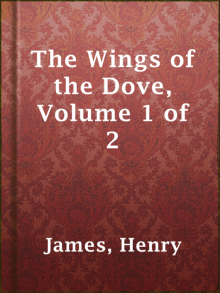 The Wings of the Dove, Volume 1 of 2
The Wings of the Dove, Volume 1 of 2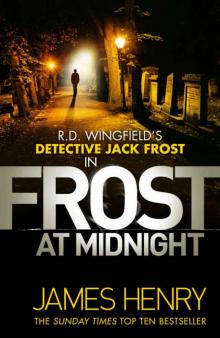 Frost at Midnight
Frost at Midnight Morning Frost
Morning Frost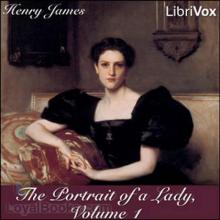 The Portrait of a Lady — Volume 1
The Portrait of a Lady — Volume 1 Fatal Frost
Fatal Frost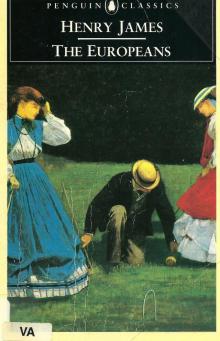 The Europeans
The Europeans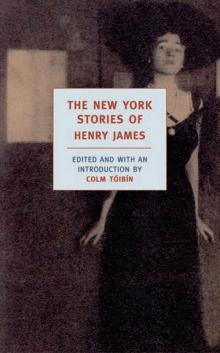 The New York Stories of Henry James
The New York Stories of Henry James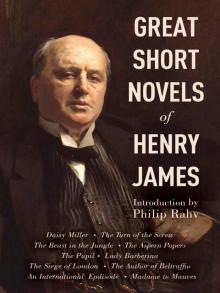 Great Short Novels of Henry James
Great Short Novels of Henry James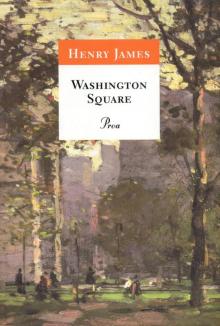 Washington Square
Washington Square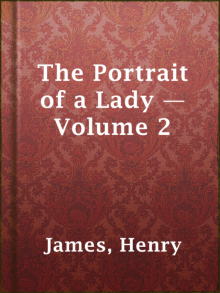 The Portrait of a Lady — Volume 2
The Portrait of a Lady — Volume 2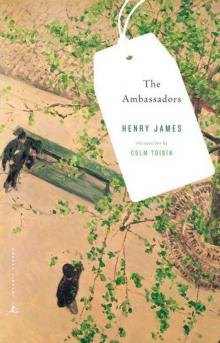 The Ambassadors
The Ambassadors The Wings of the Dove
The Wings of the Dove The Princess Casamassima (Classics)
The Princess Casamassima (Classics)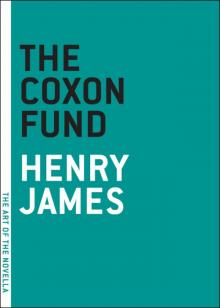 The Coxon Fund
The Coxon Fund First Frost
First Frost Henry James
Henry James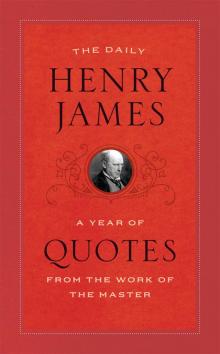 The Daily Henry James
The Daily Henry James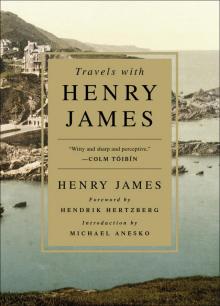 Travels With Henry James
Travels With Henry James The Reverberator: A Novel
The Reverberator: A Novel What Maisie Knew (Henry James Collection)
What Maisie Knew (Henry James Collection)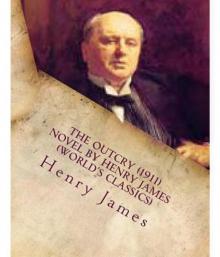 The Outcry
The Outcry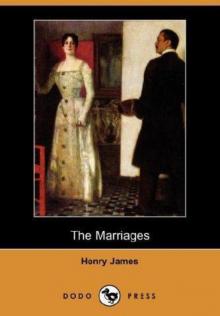 The Marriages
The Marriages The Wings of the Dove, Volume 2
The Wings of the Dove, Volume 2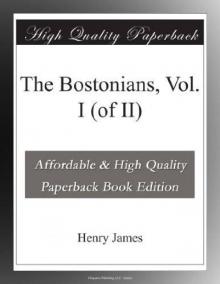 The Bostonians, Vol. I
The Bostonians, Vol. I The Outcry: -1911
The Outcry: -1911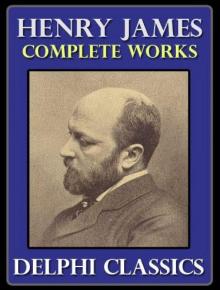 The Complete Works of Henry James
The Complete Works of Henry James Letters from the Palazzo Barbaro
Letters from the Palazzo Barbaro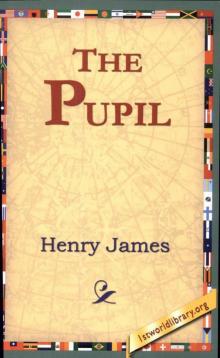 The Pupil
The Pupil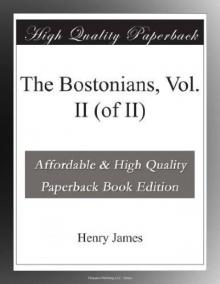 The Bostonians, Vol. II
The Bostonians, Vol. II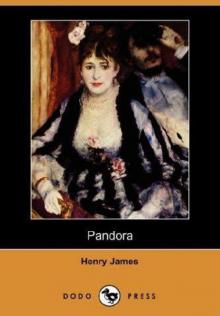 Pandora
Pandora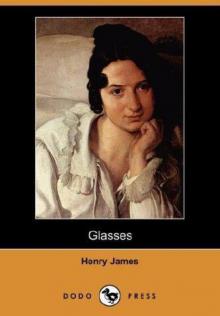 Glasses
Glasses The Princess Casamassima
The Princess Casamassima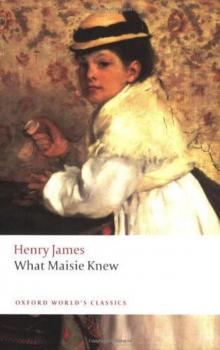 What Maisie Knew
What Maisie Knew The Reverberator
The Reverberator The Golden Bowl - Complete
The Golden Bowl - Complete Confidence
Confidence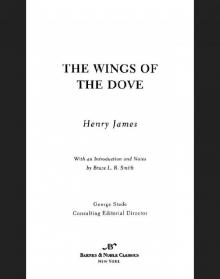 Wings of the Dove (Barnes & Noble Classics Series)
Wings of the Dove (Barnes & Noble Classics Series) The Spoils of Poynton
The Spoils of Poynton